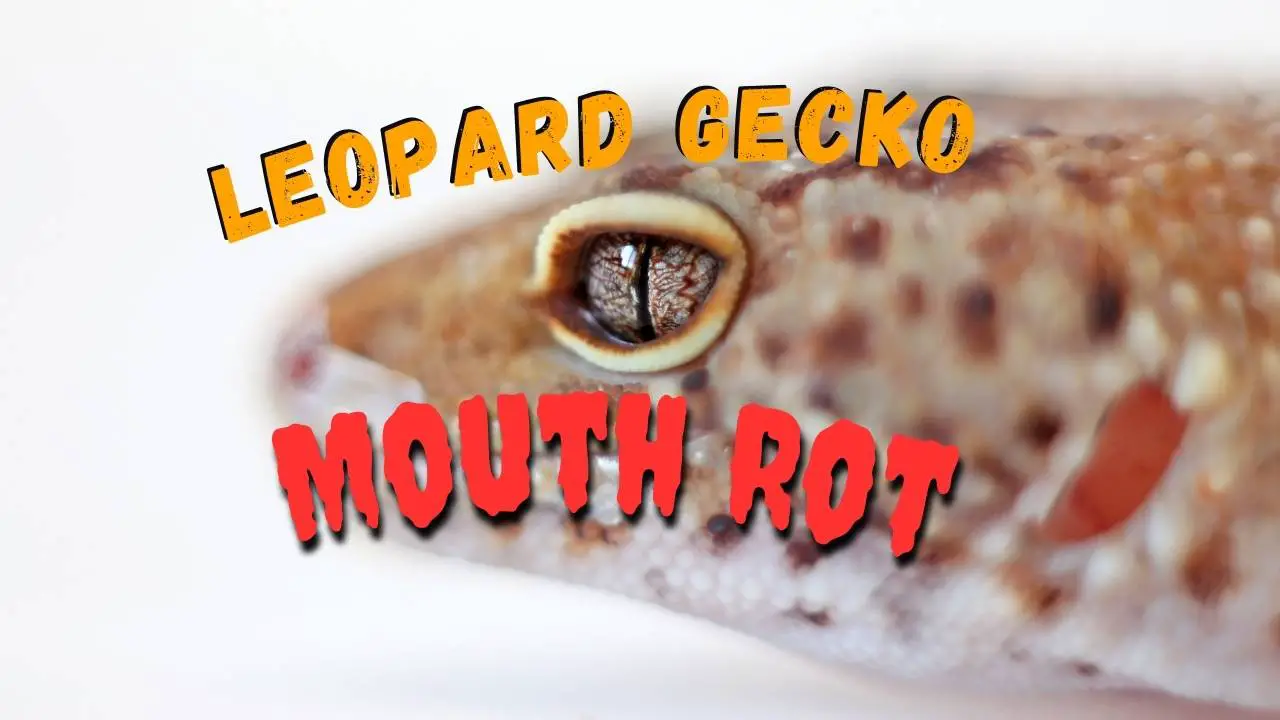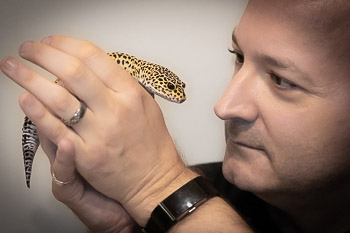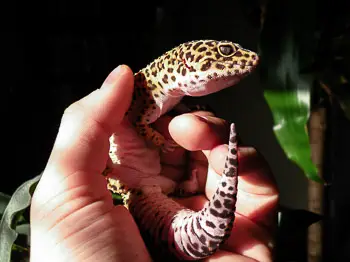Leopard geckos are popular pets due to their docile nature and low maintenance needs. As responsible reptile owners, we want to make sure our pets are healthy and we’re able to catch any ailments early.
One such ailment is mouth rot, also known as infectious stomatitis. Mouth rot is a bacterial infection that affects the mouth and gums of leopard geckos. This condition can be painful and even life-threatening if left untreated.
As a loving pet owner, you want to ensure your leopard gecko is happy and healthy. Read on to recognize the signs and symptoms of mouth rot, its causes, and risk factors, treatment options, and prevention measures to keep your gecko safe and healthy.
Key Takeaways:
- Mouth rot is a bacterial infection affecting the mouth and gums of leopard geckos, caused by poor hygiene, tank conditions, stress, or a weakened immune system.
- Symptoms of mouth rot include swollen, red, and painful mouth, oral discharge, swollen gums, loss of appetite, and lethargy.
- Treatment options for mouth rot typically include antibiotics, while prevention and management involve proper hygiene, clean and stress-free habitat, and a well-balanced diet.
- Mouth rot can be contagious and isolating the infected reptile, following isolation precautions, and quarantine protocol can effectively control contagiousness.
What is Mouth Rot
Mouth rot, also known as infectious stomatitis, is a bacterial infection that affects the mouth of reptiles and amphibians. Mouth Rot is a common condition among leopard geckos caused by poor hygiene, stress, or a weakened immune system. If your leopard gecko has mouth rot, you’ll notice its mouth looking swollen, red, and painful.
If left untreated, mouth rot can lead to serious complications. The keep your gecko healthy, it’s important to spot illness early.
Signs and Symptoms of Mouth Rot
One way to spot common signs of mouth rot is by examining your reptile’s eating habits, as well as any physical changes in the mouth area. Here are some signs to look out for:
- Oral discharge: If you notice any pus or mucus around your gecko’s mouth, this could be a sign of mouth rot.
- Swollen gums or mouth tissue: Check for any swelling or redness around the mouth area. Redness in the oral tissue indicates an infection. If you see brown or black in the mouth, this is a sign of dead tissue.
- Lack of appetite: When your mouth hurts, you don’t want to eat – and neither will your gecko. If your gecko isn’t eating or has a decreased appetite, this could be a sign of mouth rot. Check for swelling and redness in the oral tissue.
- Lethargy: If your gecko is less active or seems tired, this could also be a sign of mouth rot.
It’s important to catch mouth rot early and seek veterinary care. If you see signs of infected tissue or puss, it’s time to see a reptile veterinarian as soon as possible. Keep an eye on your leopard gecko’s behavior and physical health, and don’t hesitate to seek help if you notice any of these symptoms.
Causes and Risk Factors of Mouth Rot
Identifying the causes and potential risk factors of mouth rot can help prevent this common reptile ailment.
Poor living conditions or hygiene are often the main causes of mouth rot in leopard geckos. Harmful bacteria can easily build up in their mouth when their enclosure isn’t cleaned regularly. It’s important to clean your gecko’s enclosure regularly and to disinfect all surfaces with a reptile-safe cleaner.
Injuries to the mouth can contribute to the risk of mouth rot. Bites from feeder insects or other geckos can cause wounds where bacteria can take hold in the mouth. Also, be careful with feeding tongs if you hand feed. Sharp or pointy edges can similarly cause wounds.
A weakened immune system is a risk factor for a number of ailments. If a leopard gecko’s immune system is compromised, it becomes more susceptible to infections such as mouth rot. This can be caused by poor diet, poor nutrition, stress factors, or environmental factors such as incorrect temperatures or humidity levels.
Make sure your leopard gecko is receiving a balanced diet and is living in a clean environment that’s suitable for its needs.
Mouth Rot Treatment Options
There are several options available for treatment of mouth rot. Depending on the severity of the case, you can antibiotics and home treatment, though veterinary care is highly recommended.
Care from a qualified vet is the best option, especially if the infection is severe. They can perform a thorough examination and prescribe the appropriate medication, such as antibiotics and/or antiseptic solution. In extreme cases, surgery may be required to remove necrotic tissue if the infection has advanced.
If the infection is mild, you can try treating it at home by cleaning the mouth with antiseptics and applying topical ointments or gels. Again, it’s best to have a vet give a proper diagnosis and specific medications.
In any event, a deep cleaning of the enclosure is in order to knock out the bacteria. Sterilization of all bowls, accessories, substrate, and tank surfaces is highly recommended. (Check out or post on cleaning your leopard gecko tank.)
Remember to always consult with a veterinarian before attempting any treatment options, as they can provide expert advice on the best course of action for your leopard gecko.
Prevention of Mouth Rot
To keep your pet happy, it’s crucial to take preventative measures against mouth rot. One of the most important ways to prevent mouth rot in leopard geckos is through dietary changes. Make sure you’re feeding your gecko a well-balanced diet. Avoid feeding them too many fatty insects (I’m looking at you, Wax Worm), as this can lead to obesity and a weakened immune system.
In addition to dietary changes, habitat modifications can also help prevent mouth rot. Make sure your gecko’s enclosure is clean and well-maintained, with proper temperature and humidity levels. Provide them with plenty of hiding spots and a comfortable substrate to reduce stress. Regularly cleaning your gecko’s enclosure and providing fresh water will also help prevent the spread of bacteria.
Finally, stress reduction and regular check-ups with a veterinarian can also prevent mouth rot and other health issues in leopard geckos.
Contagiousness and Isolation
If you want to keep your other reptiles healthy, it’s important to know that mouth rot can be contagious and that isolating an infected reptile is crucial. This is because mouth rot is caused by bacteria that can easily spread to other reptiles.
To prevent potential spread and ensure the health of your other pets, it’s important to take isolation precautions and quarantine infected animals. If the infected gecko shares a tank with other leopard geckos, you should isolate the infected reptile in a separate enclosure. This includes separate feeding and watering dishes, as well as tools used for cleaning the enclosure.
It’s also important to wash your hands thoroughly after handling the infected reptile to prevent transmission risks. By following these isolation precautions and quarantine protocol, you can effectively control the contagiousness of mouth rot and keep your other reptiles healthy.
Related Posts: Know how to recognize signs of tail rot and other common leopard gecko ailments.
Wrap Up – Mouth Rot in Leopard Geckos
Now that you know how to spot the major symptoms of mouth rot, it’s important to keep an eye out for any signs of this condition.
Remember, mouth rot can be a serious and even fatal condition if left untreated. If you notice any of the symptoms we discussed, be sure to take your gecko to a veterinarian as soon as possible.
By providing your gecko with proper care, you can avoid common diseases such as mouth rot. Keeping a clean and stress-free environment, feeding them a healthy diet, maintaining proper environmental conditions, and regularly checking their mouth for any abnormalities, can help keep your gecko healthy and happy.





